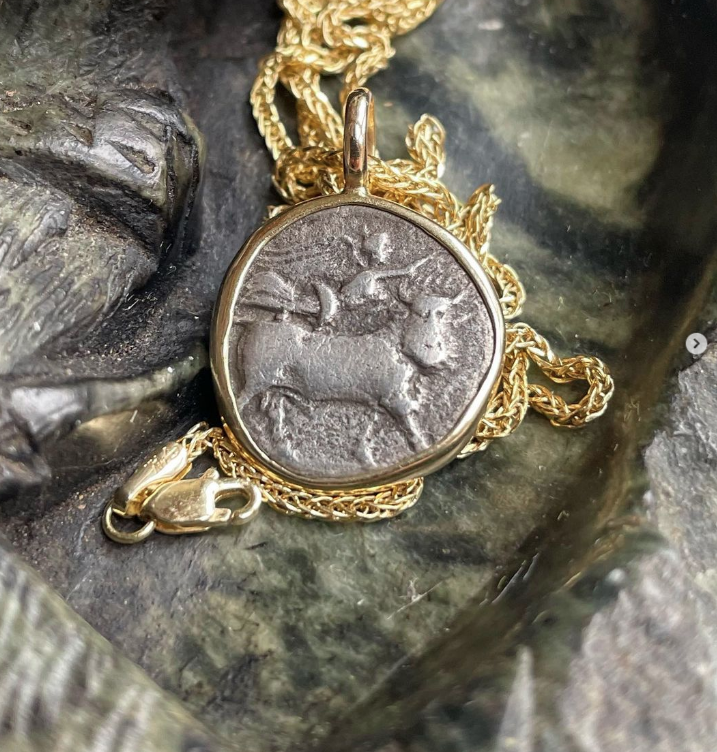Buying Ancient Coin Jewelry on Etsy: BEware
It is possible to find decent, well-priced ancient coin jewelry anywhere. That includes Etsy. However, there are sellers that I would avoid. This post highlights some of the characteristics of these sellers’ jewelry. I don’t mean to pick on individual sellers, but to inform consumers when spending money on an item they may know very little about. This post is not meant to be exhaustive by any means and I expect to add new noticeable listings in the future.
Overpriced jewelry
Sellers will take advantage of the fact that most buyers have no idea what ancient coins are worth. Banking on the opacity of the ancient coin market (and the average consumer’s lack of knowledge on this topic) they ask prices that are extreme.
Don’t get me wrong, I do think there are times when ancient jewelry could be thousands of dollars. Depending on the coin used and level of expertise for the setting, the materials used in that process, it could be completely reasonable to charge a lot. Some coins, such as those from Athens featuring an owl are expensive (starting at a few hundred dollars or more). A jewelry piece with such a coin will typically cost at least a thousand dollars.
But, that does not mean all ancient coin jewelry should be priced that high. Take a look at the first example where the seller asks an astronomical 22 thousand dollars.
This coin (or a similar one) can be found for a few hundred dollars, at most. Even it were a thousand dollars, would this asking price warrant it?
These two coins are authentic ancient coins. One would surely think since they are real ancient Roman coins, they most be worth thousands, right? Wrong. These coins are very affordable.
Late Roman coins (like these ones) are ubiquitous. Though I find these settings better than the ones below (these two were bezel set by hand, as opposed to using premade bezels), these prices are excessive.
Lazy Jewelry
Another category to be aware of is jewelry that took very little effort to “make”. The thirdimage shows ancient Roman coins, some of which have excellent patina. The seller calls these settings “bezel”, but on closer inspection we see this is not the case. These coins were stuck to a premade bezel with some kind of adhesive. This might destroy the reverse of the coin, does not look good (look at the space between the coin and the edge of the casing) and is in my view not worth 200 dollars (given that these coins are not that expensive either).
Here is a Marcus Aurelius denarius in another setting type I don’t like for ancient coins. For nearly 1300 dollars you would expect there to be craftsmanship in creating the piece. As you can see, this setting was also prefabricated and an ancient coin inserted into it. If you have ever held ancient coins, you know they are not perfectly round. Part of their charm is their irregular shapes. This seller manages to “set” coins into premade bezels (meant for modern coins). I can only imagine this must take quite a bit of filing of the coin to get it to fit.
Perhaps this could work for a perfectly round modern coin. But not for ancient and certainly not at that price as the coin may be worth a few hundred dollars at most.
This one is actually not that bad. The coin is real and the setting took craftsmanship to make. However, at nearly 1500 dollars, I don’t think this flawed setting in combination with a common coin is a good deal.
If you’re contemplating an ancient coin piece but are not sure if the price is reasonbale, feel free to send me a message at info@peregrinependants.com and I will happily share my thoughts.
To compare, below is a gorgeous ancient coin from Campania that I recently set in 18k gold. The coin cost me about 275 USD and I sold the piece for a thousand dollars.







